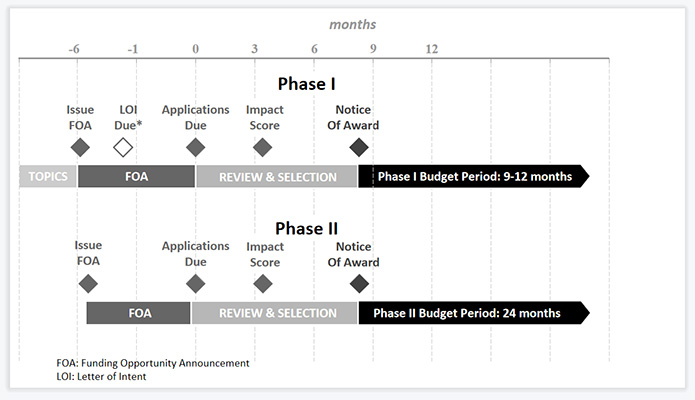Getting Started
The first step is to determine that the organization meets eligibility requirements for SBIR. To submit an application organizations must be small businesses of no more than 500 employees, organized for profit within a place of business in the United States, operating primarily in the United States, or significantly contributing to the United States economy via taxes or use of American products, materials, and/or labor.
Knowing your organization is eligible, the next step is to create an innovative research idea that could be commercialized. Look into targeted SBIR solicitations as well, to determine if any match with your topic of choice.
When you’re ready with a strong research idea, there are five required registrations with SBIR which may take up to two months to process.
Application and Review
Organizations will want to leave ample time to create a competitive SBIR proposal, so be sure to work backward from the grant due date. Applications can be submitted online up to 5 p.m. local time of the submitting organization, on the due date.
SBIR applications are divided into phases. Phase I is to establish how feasible a project is as well as its technical merit and commercial potential. This has to be proven to qualify for more support as a Phase II project. There is an option for a fast track application process for applications with high potential for commercialization, in which a Phase I and Phase II application is made at the same time, submitted and reviewed together and receiving a single rating.
Following application, a scientific review officer recruits peer reviewers, who discuss applications based on their preliminary overall impact score. Those that are discussed receive a final impact score. The officer writes a summary statement and gives that and peer critiques to the applicant. The advisory council or board of the institute then performs a second level of review. Approximately one to two months later, applicants selected for an award will receive their funding.
Stay tuned for Part II to follow. In the meantime, contact us as needed at (650) 937-9164 or greatscience@grantengine.com about how we can aid your search for a funding opportunity.


Recent Comments